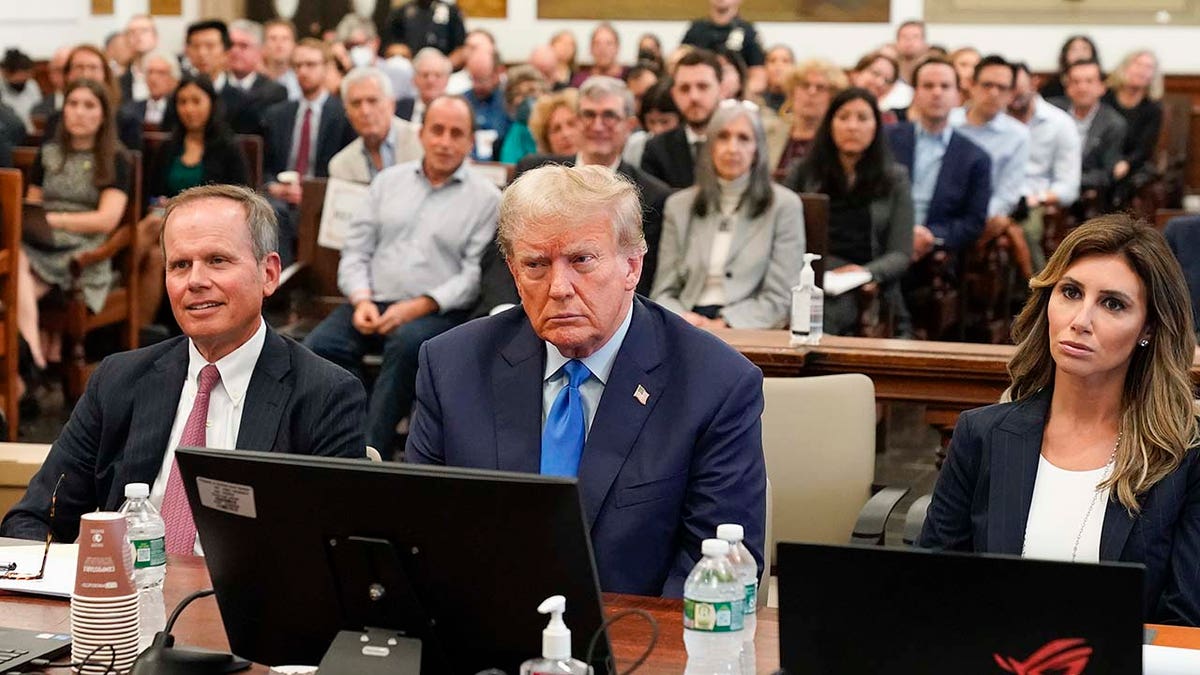The Misrepresentation Of Mentally Ill Killers: A Critical Analysis

Table of Contents
The image of a mentally ill person as a violent killer is deeply ingrained in our collective consciousness. This pervasive misrepresentation of mentally ill killers is not only inaccurate but also contributes significantly to the already substantial stigma surrounding mental illness. This article aims to critically analyze how media perpetuates this harmful misconception, examining the ways in which it exaggerates links between mental illness and violence, ignores contributing factors, and ultimately hinders progress in mental health awareness.
Media Portrayal and its Impact:
Exaggerated Links Between Mental Illness and Violence: Media frequently portrays individuals with mental illness as inherently violent, a gross oversimplification that ignores the reality that the vast majority of people with mental health conditions are not violent. This "crazy killer" archetype is a recurring trope in film, television, and news reporting, shaping public perception and fueling fear.
- Examples: The portrayal of Hannibal Lecter in Silence of the Lambs and similar characters in countless horror films reinforces this dangerous stereotype. News headlines often focus on the mental health status of perpetrators, even when such information is irrelevant to the crime itself.
- Statistics: Studies consistently show that individuals with mental illness are far more likely to be victims of violence than perpetrators. The National Institute of Mental Health reports that individuals with severe mental illness are only slightly more likely to commit violent acts than the general population, a difference often dwarfed by other risk factors.
Ignoring the Role of Other Factors: The media's focus on mental illness as the sole cause of violence overlooks a complex interplay of contributing factors. Social inequalities, childhood trauma, substance abuse, and access to weapons are often ignored, leading to a reductive and ultimately inaccurate understanding of violent crime.
- Complexities: Poverty, lack of opportunity, and exposure to violence can all increase the risk of violent behavior, regardless of mental health status. Substance abuse significantly exacerbates the risk of violence in individuals with or without mental illness.
- Reductive Nature: Attributing violence solely to mental illness ignores the systemic and societal issues that contribute to crime, and distracts from crucial policy interventions that could address these root causes.
The Role of Sensationalism and Misinformation:
Sensationalist Headlines and Reporting: Media outlets often employ sensationalist language and framing to capture attention, inadvertently reinforcing negative stereotypes about individuals with mental illness. This focus on the dramatic and unusual often overshadows the complexities of mental illness and violence.
- Examples: Headlines that emphasize the mental health of a perpetrator while downplaying other contributing factors perpetuate the harmful association between mental illness and violence. The use of inflammatory language further exacerbates the problem.
- Ethical Implications: Such reporting practices are ethically questionable, as they prioritize generating clicks and views over responsible and accurate information dissemination.
Lack of Accurate Information and Expert Commentary: Responsible reporting requires balanced perspectives and expert insights. Unfortunately, media coverage often lacks input from mental health professionals and criminologists, relying instead on anecdotal evidence or biased sources.
- Importance of Evidence-Based Reporting: Providing accurate information supported by scientific evidence is crucial in shaping public understanding and reducing stigma.
- Consequences of Inaccurate Reporting: Relying on anecdotal evidence or biased sources leads to the perpetuation of inaccurate and harmful stereotypes about mentally ill individuals.
Consequences of Misrepresentation:
Increased Stigma and Discrimination: The misrepresentation of mentally ill killers in the media contributes significantly to the already pervasive stigma and discrimination faced by individuals with mental illness. This stigma creates barriers to accessing treatment and support.
- Real-World Discrimination: Individuals with mental illness often face discrimination in employment, housing, and social interactions, further exacerbating their challenges.
- Impact on Well-being: The fear of stigma can deter individuals from seeking help, leading to delayed or inadequate treatment and worsening mental health outcomes.
Hindering Progress in Mental Health Awareness: Inaccurate portrayals actively hinder efforts to improve understanding and reduce stigma surrounding mental health. Responsible media coverage is critical in promoting positive change and challenging harmful stereotypes.
- Promoting Positive Change: Media can play a vital role in promoting accurate and nuanced representations of mental illness, thereby fostering empathy and understanding.
- Alternative Representations: Instead of focusing solely on violence, media could showcase the diverse experiences of individuals with mental illness, their resilience, and their contributions to society.
Conclusion:
The misrepresentation of mentally ill killers in media is a significant problem, perpetuating harmful stereotypes, increasing stigma, and hindering progress in mental health awareness. The media's focus on sensationalism, the neglect of other contributing factors to violence, and the lack of accurate information contribute to this harmful depiction. We need to be critical consumers of media, challenging the stereotypes and advocating for more responsible and accurate reporting on mental illness and violence. Let's work together to combat the misrepresentation of mentally ill killers and promote a more accurate and compassionate understanding of mental health. Further reading on the topic of mental illness and violence can be found at the websites of the National Alliance on Mental Illness (NAMI) and the National Institute of Mental Health (NIMH).

Featured Posts
-
 Ashhr Laeby Krt Alqdm Aldhyn Kanwa Mdkhnyn
May 09, 2025
Ashhr Laeby Krt Alqdm Aldhyn Kanwa Mdkhnyn
May 09, 2025 -
 Lake Charles Easter Weekend A Roundup Of Live Music And Events
May 09, 2025
Lake Charles Easter Weekend A Roundup Of Live Music And Events
May 09, 2025 -
 73 000
May 09, 2025
73 000
May 09, 2025 -
 Suncors Record Production Impact Of Inventory Buildup On Sales Volumes
May 09, 2025
Suncors Record Production Impact Of Inventory Buildup On Sales Volumes
May 09, 2025 -
 Micro Strategy Competitor A Deep Dive Into The Latest Spac Investment
May 09, 2025
Micro Strategy Competitor A Deep Dive Into The Latest Spac Investment
May 09, 2025
Latest Posts
-
 Attorney Generals Threat Understanding The Implications For Trumps Opponents
May 10, 2025
Attorney Generals Threat Understanding The Implications For Trumps Opponents
May 10, 2025 -
 Update Pam Bondi Announces Release Of Epstein Related Files
May 10, 2025
Update Pam Bondi Announces Release Of Epstein Related Files
May 10, 2025 -
 Donald Trumps Attorney General Delivers Stark Warning
May 10, 2025
Donald Trumps Attorney General Delivers Stark Warning
May 10, 2025 -
 The High Cost Of Entry Down Payments And Canadian Homeownership
May 10, 2025
The High Cost Of Entry Down Payments And Canadian Homeownership
May 10, 2025 -
 Is A Large Down Payment Preventing You From Buying A Home In Canada
May 10, 2025
Is A Large Down Payment Preventing You From Buying A Home In Canada
May 10, 2025
